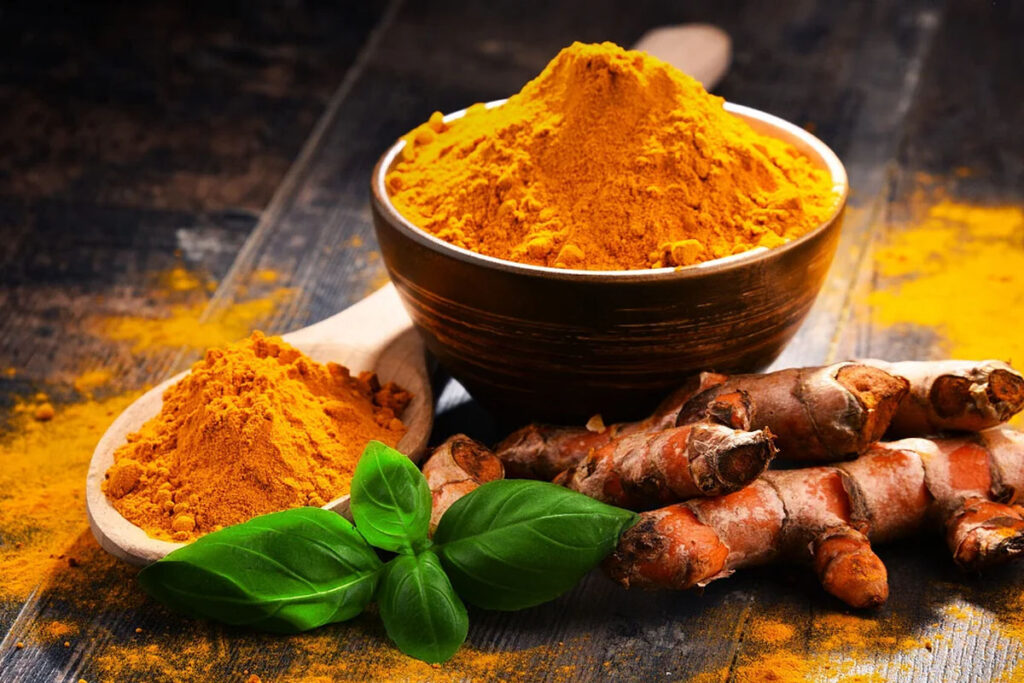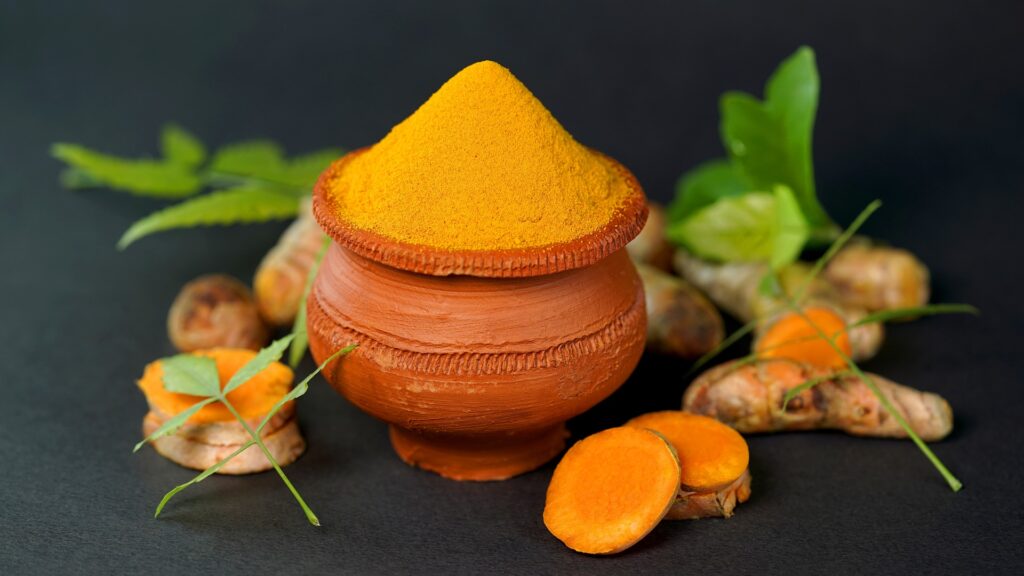Health is wealth (Small Changes, Lifelong Impact)

Another ancient savior that we all eat on a regular basis and are familiar with by name. In India, it is a key member of the spice family. In the future, I plan to investigate all of the unknown spices that can protect the body from hazardous diseases and discuss their promising healing properties.
So, curcumin and turmeric are the same thing; curcumin is a solid form of turmeric that breaks down to become turmeric, the spice form.
Turmeric has a long history, dating back to antiquity and continuing to this day. It is also reasonably priced in comparison to the market cost.
Turmeric is a brilliant yellow spice made from the root of the Curcuma longa plant, a member of the ginger family. It is widely used in cooking, especially in Indian and Southeast Asian cuisines, due to its flavor, color, and health advantages.
Turmeric is used as a spice in a variety of cuisines, adding a warm, bitter flavor and a bright yellow color. It is an important ingredient in curry powders and is used in a variety of Indian, Middle Eastern, and Southeast Asian cuisines.
Turmeric is commonly used to color dishes such as mustards, cheeses, and butters because of its vibrant hue.
Turmeric is derived from Curcuma longa L., a perennial herb in the ginger family Zingiberaceae that is native to tropical South Asia. Curcuma is made up of around 100 different species, 40 of which originated in India.
Turmeric, which has a striking yellow color, is also known as “Indian saffron.” Within the last two decades, nearly 3000 research articles have been published describing turmeric’s therapeutic value.
In some cultures, it is mostly used as a spice, but it is also an essential component of curries in Malaysia, India, China, Polynesia, and Thailand, as well as mustard and sauces in the West.
Curcuma longa, Curcuma aromatica, Curcuma caesia, Curcuma zedoaria, Curcuma kwangsiensis, Curcuma phaeocaulis, and Curcuma comosa have all been utilized in Ayurveda, Siddha, Unani, Chinese, veterinary, and folk medicine in Southeast Asia.
Curcuma has long been used in Ayurvedic medicine to treat a variety of respiratory illnesses, as well as hepatic conditions, sinusitis, rheumatism, diabetic sores, runny nose, cough, and anorexia.
From ancient times, as prescribed by Ayurveda, turmeric has been used to treat sprains and swelling. In traditional Chinese medicine, it is used to cure diseases linked to abdominal pain and improve digestion.
Usually, it is added to the food preparation such as rice and beans to alleviate digestion and reduce gas and bloating. Often, turmeric mixed with milk or water is advised to treat intestinal disorders as well as colds and sore throats.
In Western countries, ground turmeric rhizome is widely used in food industry, in particular as a coloring agent in processed foods and sauces.
Turmeric is the most widely accepted therapeutic herb, with a wide range of pharmaceutical actions including antioxidants, antiprotozoal, anti inflammatory, antibacterial, antimalarial, antiproliferative, anticancer and antiaging properties.
Curcumin explained: The science behind turmeric’s healing power
The golden goddess

During the pandemic, turmeric became one of the medicinals, and as a result, turmeric acquired a lot of attention in the market; it is a spice that is used to treat both internal and external harm.
It goes by many different names and has a variety of useful characteristics.
Modern medicine has beginning to acknowledge its relevance, as evidenced by the approximately 3000 papers on turmeric that have appeared in the previous 25 years.
Nowadays, several studies are being conducted on the anticancer, anti-inflammatory, antibacterial, and other characteristics of turmeric, and it is regarded as one of the most valuable medications.
However, turmeric (haridra) has been a part of Indian cuisine culture for ages, and it is referenced as a herb with numerous medicinal properties in the Vedas, India’s first written religion.
It was utilized as a home treatment in both internal and external applications. Haridra is mentioned in all Ayurvedic medicinal treatises, either as a solo medicine or as part of a formulation.
Because of its color and provenance, it has been described as a brilliant and golden spice.
Turmeric has a variety of properties:
1. Natural antiseptic
2. Natural analgesic
3. Speeds up wound healing
4. Improves digestion
5. Blood purifier
6. Strengthen ligaments
7. Skin Tonic
8. Helps alleviate coughing
9. Improves asthma
10. Anti-Arthritis
11. Helps in preventing gas and bloating
12. Lower cholestrol
13. Heals stomach ulcers
14. Improves skin condition
15. Helps in preventing cancer (breast, prostate, skin, colon, lymphoma, leukemia)
16. Aids in fat metabolism and weight management
Curcumin explained: The science behind turmeric’s healing power
Turmeric has long been used to treat a variety of diseases, including burns, acne, common eye infections, sprains, wound dressing, and edema.
It has also been used to strengthen the immune system and treat asthma, allergies, diabetes, cough, sinusitis, flu, rheumatism, liver disorders, and abdominal pain-related ailments.
Advances in contemporary medicine have revealed that turmeric has numerous therapeutic qualities, including antioxidant, antimutagenic, anticancer, antibacterial, and anticardiovascular activity. Several studies conducted over the last few decades have confirmed curcumin as a strong anticancer drug.
It has been demonstrated to inhibit tumor transformation, proliferation, and metastasis via regulating transcription factors, growth factors, inflammatory cytokines, and protein kinases.
Curcumin, a natural chemical found in turmeric, is thought to have anti-inflammatory qualities. It is also a well-known antioxidant, capable of scavenging nitric oxide free radicals and protecting brain cells from their detrimental effects.
In India, it is used in the diet on a daily basis, blessed with anti-inflammatory, antiviral, antibacterial, anticancer, and many other therapeutic qualities.
Turmeric and modern lifestyles

Turmeric, also known as the “golden spice,” has undergone substantial transformation and incorporation into modern lifestyles, including culinary, medical, and commercial applications.
Here’s how turmeric is being modernized:
1. Culinary innovations
Turmeric is now a global culinary staple, in addition to its historic use in Indian and Southeast Asian cuisine. It is present in smoothies, lattes, soups, and even desserts.
Chefs and home cooks are producing fusion recipes that include turmeric into a variety of cuisines, combining traditional and modern flavors.
2. Health and wellness
Turmeric’s traditional health advantages have been proven by modern science, making it a popular supplement ingredient.
Turmeric and curcumin capsules, pills, and extracts are popular anti-inflammatory and antioxidant supplements.
Turmeric is added to functional foods such as protein bars, health drinks, and snacks to provide additional health advantages.
Turmeric lattes, sometimes known as “golden milk,” are popular health drinks that are frequently seen in cafes and health food stores.
Curcumin explained: The science behind turmeric’s healing power
3. Scientific research
Turmeric has been studied for its ability to prevent and treat illnesses such as arthritis, heart disease, and cancer. This scientific validation has boosted its credibility and utility.
Bioavailability Enhancement: Innovations to increase the bioavailability of curcumin (the active element in turmeric) have resulted in more effective formulations, such as mixing it with black pepper extract (piperine) or employing lipid-based carriers.
4. Cosmetics and skincare
Turmeric is a common component in current skincare products due to its anti-inflammatory and antibacterial effects. It is included in face masks, lotions, and serums because of its ability to improve skin health and look.
DIY Beauty Treatments: There is a growing trend of utilizing turmeric in homemade beauty treatments that are inspired by historic traditions but altered to meet current demands.
5. Cultural adaptation
Turmeric has progressed from a specialist ethnic ingredient to general adoption, with it now available in supermarkets, restaurants, and health stores around the world.
Cultural Fusion: The global admiration for turmeric combines traditional and modern applications, showing a fusion of cultures and knowledge.
6. sustainable sourcing
Ethical Practices: As demand for turmeric rises, there is a greater emphasis on sustainable sourcing. Ethical and organic farming practices are being promoted to assure quality and environmental stewardship.
Fair Trade: Initiatives to promote fair trade have evolved, ensuring that turmeric growers are fairly compensated and labor under equitable conditions.
7. economic impact
Turmeric’s appeal in health and wellness, culinary arts, and cosmetics has led to significant growth in the global market.
Companies are always inventing, developing new products that take use of turmeric’s benefits, ranging from ready-to-drink beverages to fortified foods and health supplements.
8. educational outreach
Numerous campaigns educate the public on turmeric’s advantages, usage, and historical significance.
Cooking Classes and Workshops: Many culinary schools and health workshops now offer modules on turmeric’s use in both traditional and modern cuisine.
Curcumin explained: The science behind turmeric’s healing power
Turmeric’s transformation from a traditional spice to a modern superfood demonstrates how ancient wisdom can coexist with cutting-edge research and lifestyle trends, benefiting health, cuisine, and culture.
Usage of turmeric
Turmeric is a versatile spice that can be used in a variety of ways to enhance its flavor, color, and health benefits.
Here are some practical ways to incorporate turmeric into your diet and everyday routine.
Cooking
Ground turmeric can be added to curries, stews, soups, and sauces to give them a warm, earthy flavor and a brilliant color.
Rice meals: Add turmeric to rice meals such as pilafs or biryanis to give them a golden tint and boost flavor.
Toss vegetables with turmeric, olive oil, and other spices before roasting.
Sprinkle turmeric over scrambled eggs or tofu for a healthy breakfast.
Smoothies: For an added health benefit, add a tiny quantity of turmeric to your smoothies. Pair it with fruit, yogurt, or milk.
Beverages
Golden Milk: In a warm drink, combine turmeric, milk (dairy or plant-based), black pepper, and a sweetener such as honey or maple syrup.
Teas: Prepare turmeric tea with fresh or dried turmeric. Add ginger, lemon, and honey for extra taste and health benefits.
Baking
Breads and Muffins: Add turmeric to bread, muffin, or pancake batter for a unique flavor and color.
Cookies and Cakes: Experiment with turmeric in cookies and cakes, especially in recipes that use warm spices like ginger and cinnamon.
Supplements
Capsules or Tablets: Take turmeric or curcumin supplements as advised to relieve inflammation, joint discomfort, and promote overall health.
Liquid Extracts: For a convenient and quick way to consume turmeric, mix it into smoothies, juices, or water.
topical Applications
Face Masks: Use turmeric, yogurt, and honey to brighten and cleanse your skin.
Poultices: Apply a turmeric-water paste to minor cuts, burns, or bug bites to reduce inflammation and speed up recovery.
Some other tips
Combining turmeric with black pepper improves the absorption of curcumin, the key ingredient in turmeric.
Combining turmeric with healthy fats (such as olive oil or coconut oil) can help enhance curcumin absorption.
Use Fresh or Dried: Both fresh turmeric root and dried ground turmeric provide health advantages. Fresh root can be grated into dishes, while ground turmeric is ideal for cooking and seasoning.
Turmeric is commonly used in Indian cuisine, including dals, chutneys, and marinades.
Middle Eastern Cuisine: Use turmeric in tagines, pilafs, and spice blends.
Turmeric is employed in many different ethnic rituals and events, particularly in Indian cultures. It is utilized in weddings and religious events due to its auspicious and cleaning characteristics.
Keep Turmeric in a Cool, Dark Place: To maintain its efficacy, store it in an airtight container away from light and heat.
Refrigerate Fresh Root: To increase the life of fresh turmeric root, store it in the refrigerator.
Curcumin explained: The science behind turmeric’s healing power
By introducing turmeric into your daily routine in these numerous ways, you can reap a variety of advantages, from increasing the flavor of your foods to improving your health and well-being.